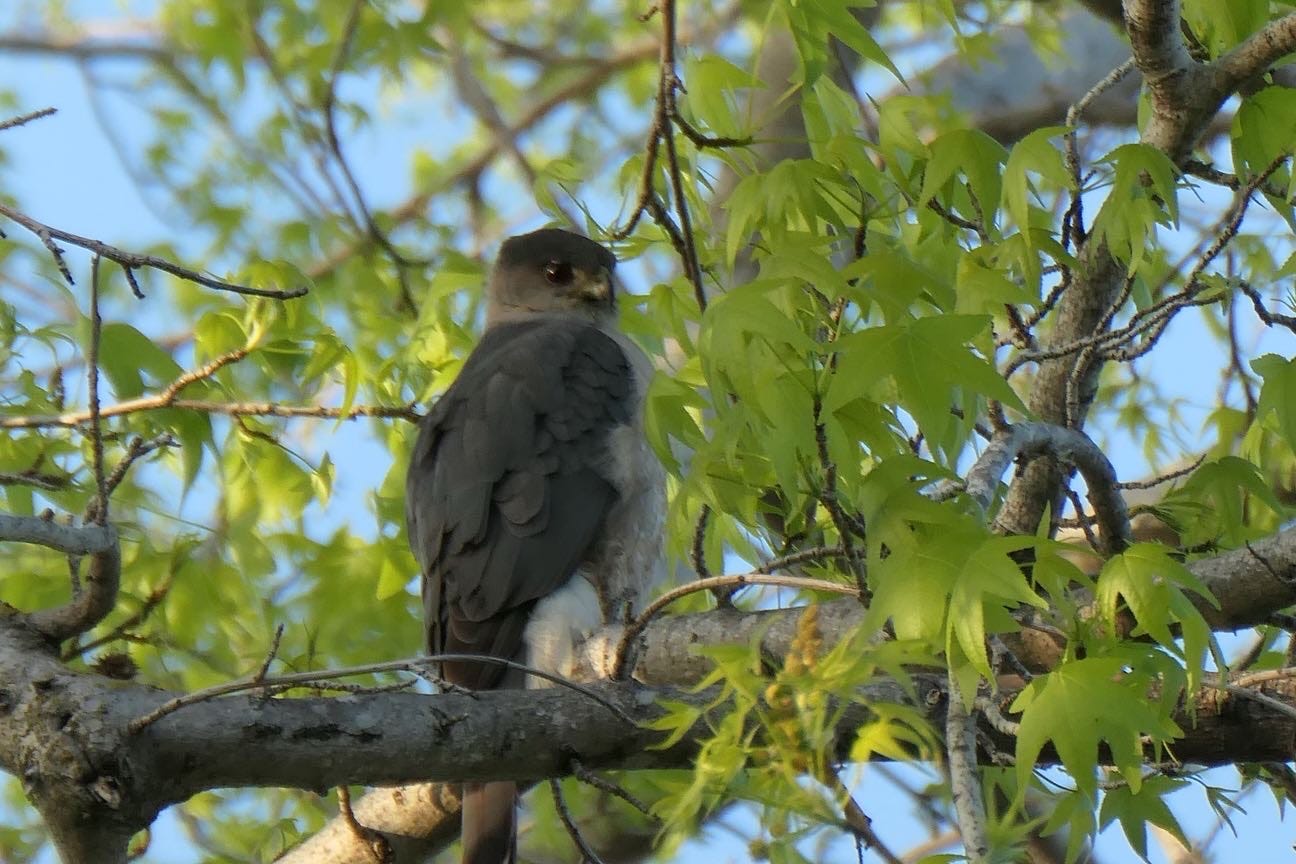Last night, I looked at a map of bird migration picked up by weather radar. Hundreds of millions of birds are on the move north right now. Especially in the Southern, Midwestern and Eastern states. If you live there and your feeders are busy, this is why.
BirdCast is amazing. It's stunning to see how many songbirds are winging north while we sleep (it’s also a great tool for preventing deadly bird-building collisions caused by urban light pollution), though here in California, it's currently 'only' fewer than 5000 birds overhead at night.
Still there's been a lot of avian turnover going on around here in Alameda. The Caspian Terns have arrived in the past few weeks, and it seems like the Western Grebes have stationing themselves for movement. Closer to home, our local residents are in full-on nesting mode. Turkeys are strutting , Goldfinch and House Finch are crowding the feeder and raptors are staking their claim to the treetops.
It’s been a great season for watching hawks in Alameda. Walking down our neighborhood ‘Slow Street’ last week, I looked down tree-lined avenue and saw a dark clump in a tall tree a few blocks head. A nest of some sort, which was confirmed when I saw a Red-Shouldered Hawk swoop into it without a sound.
Later in the evening, on our usual after-dinner walk, Kwame and I saw a pair of Cooper's Hawk in another tree further down the same street. No sign of a nest, but after a few minutes of watching, one of the birds removed the remains of their dinner — the feathered thigh and single slim leg of some unlucky songbird — from a cache in a tree branch and proceeded to tear it to shreds.
And every time I’ve been out on the east end of the island, I’ve taken a moment to check in on Alameda’s resident Peregrines who’ve been dependably perching on or flying about the Fruitvale train bridge, where they’ve nested for years. I've a hunch they're a little ahead of the famously web-cammed Berkeley pair’s cycle (with three cameras on the Campanile night and day, very few details of the Berkeley falcon's high-drama breeding life is missed), though I really don’t know. Without a web-cam, I have to work a little harder to find out what's really going on. And I’m still unlikely to get the whole story…at least not all at once.
While I’m on the topic of deriving joy and wonder from birds, this headline caught my eye:
Fugitive Flamingo Seen 17 Years Later
On July 4, 2005, African flamingo No. 492 evaded keepers at the Sedgwick County Zoo in Kansas and took flight in the middle of a thunderstorm.Fast forward to March 10, 2022, nearly 17 years later: The pink avian fugitive has been spotted again — now off the coast of Texas, alive and well.





Oh to know what that flamingo has been up to all these years! And 17 years MIA-that’s a long lived bird !